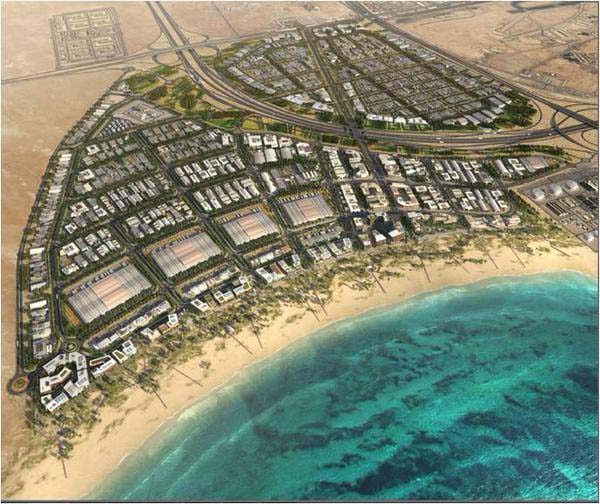
A joint venture between Qatar-based UrbaCon Trading & Contracting (UCC) and Spanish firm Sacyr has been awarded a QR1.69 billion contract to develop a special economic zone near Hamad International Airport.
The Madrid-based construction company Sacyr revealed the deal in a statement in Spanish yesterday on Twitter and LinkedIn, saying that the consortium had been awarded the design and construction package by Manateq, an organization set up by the Qatari government to develop economic zones across the country.
The zone will be built in Ras Bufontas as a warehousing and logistics hub next to HIA, just east of Al Wakrah Road. It will be 4.01 square km in size and the smallest of three planned special economic zones.
There will also be a 38.43sq km site in Al Karana, south of the Industrial Area, and at Um Alhoul near Hamad port, south of Al Wakrah on a 33.52sq km site.
What is an SEZ?
Economic zones are typically set up by governments to provide incentives for foreign investment, as well as create jobs and boost trade.
While no details have yet been publicly revealed about how Qatar’s zones would operate, companies choosing to locate to SEZs usually get breaks on corporate taxes and income duties.
The multi-billion riyal project is part of Qatar’s economic diversification, and aims to encourage more private sector businesses, particularly small and medium-sized firms, to set up here.

Each of the three economic zones will focus on different business sectors, with the Ras Bufontas scheme capitalizing on its location near the airport to serve firms specializing in airfreight, logistics and technology.
Last November, the zone’s foundation stone was laid by the Prime Minister Sheikh Abdullah bin Nasser bin Khalifa Al Thani. At the time, officials said companies would benefit from “a one-stop-shop for various essential services to start their operations.”
The site is expected to be completed in phases, with the first sector completed by March 2017, and the others developed in 2018 and 2019.
Manateq was set up by Qatar’s government in 2011 as developer and operator of new economic zones for the state.
It has also been partly responsible for establishing a new site for Souq Haraj near Barwa Village.
Plans have been underway for several years to relocate the popular second-hand and furniture souq from its existing site in Najma, and in March, the tender process for developers began.
The other zones
The zone at Um Alkhoul was formally launched in March as a light-manufacturing site, attracting businesses in petrochemicals, building materials, maritime, metals, logistics, food processing and automobiles, tools and machinery. The first phase of the zone is expected to be completed by next summer.
The largest SEZ at Al Karana will be situated about half-way between Doha and the Abu Samra border with Saudi Arabia. It will target businesses involved in building materials, machinery and fabrications, specialized spill over industries, safety and maintenance and specialized warehouse/logistics activities, according to online business publication BQ Doha.

Qatar Foundation’s Qatar Science and Technology Park (QSTP) near Education City operates the state’s only other existing free zone. It allows the companies licensed there to be 100 percent foreign owned, hire expat employees and is exempt from paying corporate taxes.
While not a full free zone, the Qatar Financial Center offers some similar incentives to financial services firms based there, including full foreign-ownership and reduced corporation tax.
Since the first free zone in the Middle East was established in Jordan’s port city of Aqaba in 1973, the number of SEZs in the region has grown to around 100, with the UAE alone hosting around 40.
Thoughts?







